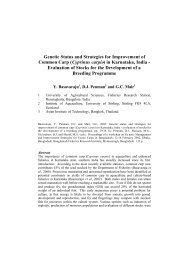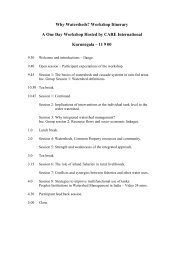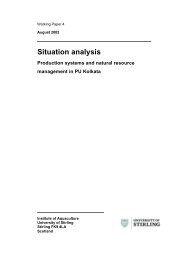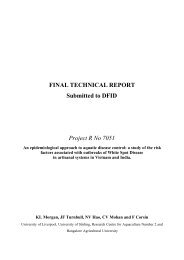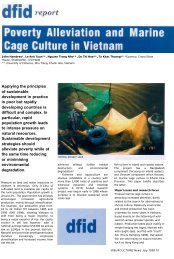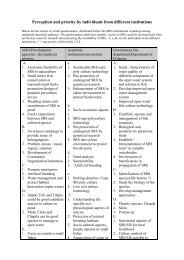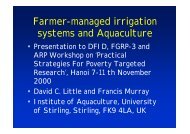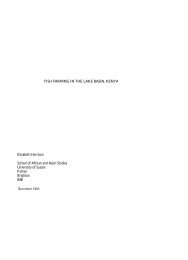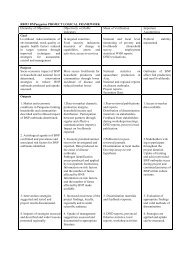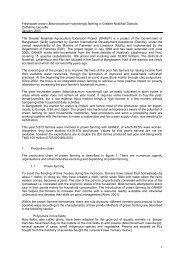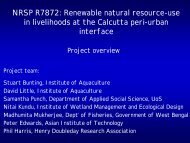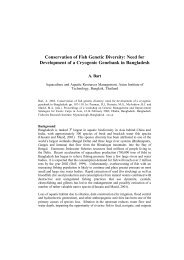Epizootic Ulcerative Syndrome (EUS) Technical Handbook
Epizootic Ulcerative Syndrome (EUS) Technical Handbook
Epizootic Ulcerative Syndrome (EUS) Technical Handbook
You also want an ePaper? Increase the reach of your titles
YUMPU automatically turns print PDFs into web optimized ePapers that Google loves.
Control of <strong>EUS</strong>Now that research on <strong>EUS</strong> has conclusively identified some causal factors,rationally based control measures can be developed and implemented.PreventionGiven that <strong>EUS</strong> occurs, and is often most damaging, in wild fish stocks, it canbe very difficult to control outbreaks within a local area. Therefore, where<strong>EUS</strong> is not endemic, the most effective means of control would be to preventthe disease entering the country, or zone within the country (e.g. an <strong>EUS</strong>-freeisland), in the first place. Known <strong>EUS</strong>-susceptible fish are common in Africaand central Asia, and potentially susceptible fish occur in most othercountries that are presently <strong>EUS</strong>-free. Quarantine and health certificationguidelines for the movement of live fish between countries or regions arecurrently being proposed (Humphrey et al. 1997) and these may prove to be aneffective means of preventing the spread of <strong>EUS</strong> to new areas. Publication ofstandard diagnostic techniques for important fish diseases such as <strong>EUS</strong>, andthe development of pathogen-host databases will further assistimplementation of these guidelines.For areas where <strong>EUS</strong> is presently considered endemic, prevention programsshould include the following activities :· Eradication· Exclusion· Management· Surveillance· TreatmentEradicationThe aim here is to eradicate A. invadans from an already infected site (e.g.farm or pond). Although little is known about how the fungus survivesbetween outbreaks, available evidence suggests that infection may persist,usually at low prevalence, in susceptible fish populations remaining at thesite between crops. It is also possible, but less likely, that the fungus maysurvive in the aquatic environment either as encysted spores or on non-fishsubstrate.Accordingly, measures to eradicate the fungus should include :· Removal of all fish (particularly all susceptible species) fromponds, reservoirs and water supply channels prior to re-stocking;· Drying out and liming of ponds;· Disinfection of contaminated equipment.37




